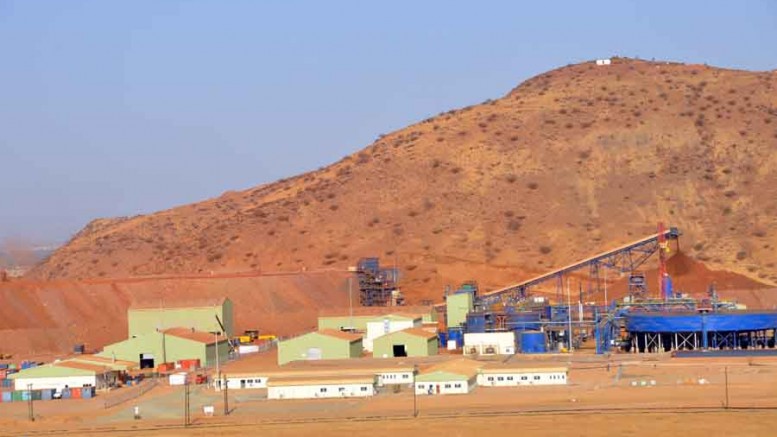Doing business in East Africa may come with its challenges, but Nevsun Resources (NSU-T) has a robust outlook for its Bisha mine in Eritrea despite dealing with matters that miners closer to home would never encounter.
In mid-January, Human Rights Watch accused the company of having forced labour present during the construction of Bisha some four years ago.
As reported in The Northern Miner (see page 5), the report says that the Eritrean government conscripts locals into forced labour and while most are sent to the country’s military, some are forced to work for state-owned companies, such as the Segen Construction Company.
And that is where the Nevsun connection is made, as the government insisted on that the Vancouver-based miner use Segen for the construction of its Bisha mine. For its part, Nevsun says it became aware of the possibility that Segen could be using forced labour in 2009 and immediately took steps to ensure that it wasn’t happening.
Adding to the dark social aspect of Eritrea’s business ethics is increasing political risk. Reports surfaced that a small coup broke out on January 21. The official word is that a group of break-away soldiers took complaints about their officers to a government building in the capital of Asmara, but other reports say the renegade soldiers laid siege on the building.
“Clearly there was a protest by some soldiers in the capital,” Nevsun’s vice-president of business development Scott Trebilcock said via email. “[But] there is no change to operations or our outlook on the country.”
Nevsun says operations at the mine, located 150 km west of the capital, are humming along better than expected.
The company boosted production guidance for the year at its 60% owned gold-copper-zinc mine, just as it prepares to transition from the deposit’s oxide gold zone to its supergene zone, which is predominantly copper.
Oxide gold production is expected to continue until the end of the second quarter, and the company anticipates turning out between 80,000 and 90,000 oz. of gold during that time.
If it does, those ounces will far exceed Haywood Securities analyst Stefan Ioannou’s forecast, as he had been expecting just 41,000 oz. of gold for the entire year.
“We do not plan to adjust our modelled oxide gold production profile until initial 2013 production data becomes available, given the company’s guidance includes more oxide tonnage than is remaining in Bisha’s reserve,” the analyst wrote in his report.
As of May 31, probable reserves at Bisha stood at 900,000 tonnes grading 5.79 grams of gold and 35 grams of silver for 167,000 oz. gold and 1.02 million oz. silver.
In the last half of 2012, the company produced 144,000 oz. gold, and that does not include production from June, so the company will have to outline more ounces if it is to meet its own guidance.
Ioannou points out that Nevsun has had a poor track record predicting the deposit’s oxide gold head grade profile over the last 12 months, as evidenced by production guidance being changed three times last year.
The difficulty in predicting grades had to do with the deposit’s variable gold and silver grades in both the acid domain and in the supergene transition zone.
Another factor to keep in mind, according to the Haywood report, is the economic viability of that supergene transition zone. Nevsun started metallurgical work on the zone in the fourth quarter of last year, and while results from the study have yet to be released, Ioannou worries that a high pyrite content could translate into high reagent consumption and, consequently, higher operating costs.
If the rock turns out to be ore, Nevsun expects that the transitional material could add 20,000 to 30,000 oz. of gold production to the deposit’s oxide profile.
With cash costs expected to increase significantly over last year’s numbers, the additional ounces would be a welcome addition to the company’s bottom line.
In the first half of 2012, cash costs came in at just US$265 per oz. The number had climbed to US$307 per oz. by the third quarter of last year due to lower head grades and longer trucking distances from the Harena zone to the plant.
Nevsun has not issued guidance on cash costs, but Haywood is expecting them to come in at US$850 per oz. for the first half of this year. The Haywood report also expects a hiatus from “meaningful metal production” of over three months this year due to the move from oxide gold to supergene copper.
Nevsun plans to move into supergene copper production in the middle of the year and says construction of the necessary facility to produce copper concentrate is on schedule and on budget.
The capex for copper phase is US$125 million.
Nevsun’s shares enjoyed a strong run through the latter half of last year, climbing from a low of $2.82 in July to a high of $4.77 in early October. In Toronto on Jan. 24, the company’s shares were off 5%, or 22 cents, to $4.26 on roughly 250,000 shares traded.


Be the first to comment on "Eritrean trials and tribulations for Nevsun"